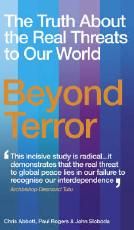The European Commission is funding a 2-year, $312,000 study on the safety and ethical aspects of synthetic biology. From the introduction part of the site:
We will pursue our objectives by means of a fact-finding mission, contribution to the European “inaugural” Conference on Synthetic Biology in Zurich (SB 3.0), an open e-forum and an international workshop. The foreseen impact of our project will be no less than to stimulate a European debate on these issues at an early stage. Past experiences, especially in the field of GM-crops, have shown the importance of an early bio-safety and ethics debate. The community recognized this need, but up to now discussions are fragmentary. Our project aims to stimulate a European debate in a proactive way. That way we will contribute to the European synthetic biology community, supplementing genuine biosafety and bioethics aspects.
Looks like a great start on addressing a very important area of concern. For a blog post of mine that goes into a bit more detail on the issue of synthetic biology and its risks, see here.









